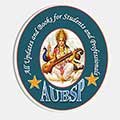In Canada, education generally begins with optional early childhood programs (ages 0–4), followed by kindergarten at age 5. Formal compulsory schooling starts at age 6 with Grade 1 and continues through Grade 12 (typically age 17 or 18). The system is divided into elementary (Grades 1–6), middle (Grades 7–8), and high school (Grades 9–12), though exact grade groupings vary by province.
Quebec has a unique system that includes CEGEP—a two-year college program between high school and university. After high school, students may pursue post-secondary education at colleges or universities, leading to bachelor’s, master’s, or doctoral degrees, typically completed between ages 18 and 25+.
Navigating the Maple Leaf Learning Path: An Age-by-Age Guide to Education in Canada
Canada boasts a robust and publicly funded education system, highly valued for its quality and accessibility. Understanding its age-based structure is key for families navigating the learning journey, from the earliest years to higher education pursuits. While specific regulations and names of levels can vary slightly between Canada’s ten provinces and three territories, the following provides a comprehensive overview of the typical educational progression across the country.
The Foundational Years: Early Childhood Education (Ages 0-5)
The educational landscape in Canada begins even before formal schooling with Early Childhood Education (ECE). This crucial stage, typically spanning from birth to age five, lays the groundwork for future learning and development.
Ages 0-4: Daycare and Preschool (Optional): For families requiring care and early learning opportunities, various licensed daycare centers and preschool programs are available. While not mandatory, these settings focus on fostering social, emotional, cognitive, and physical development through play-based learning. Children engage in activities that enhance motor skills, language acquisition, and social interaction. These programs are often privately run, although some provinces offer subsidies to help with costs.
Ages 4-5: Pre-Kindergarten (Pre-K) (Optional, Varies by Province): Some provinces offer a pre-kindergarten year, often referred to by different names depending on the region (e.g., Junior Kindergarten in some provinces starting earlier than age 5). This is a preparatory year before formal schooling begins and focuses on building foundational skills in literacy, numeracy, and social skills in a more structured environment than daycare. Participation in Pre-K is generally optional but is seen as a valuable stepping stone for many children.
Entering Formal Schooling: Primary Education (Ages 5-12)
Formal compulsory education typically commences around the age of five or six with Kindergarten, marking the beginning of the primary education years.
Ages 5-6: Kindergarten (Junior & Senior): Most provinces offer a two-year Kindergarten program (Junior Kindergarten followed by Senior Kindergarten), although some may have a single year or start directly with Grade 1. Kindergarten is increasingly becoming a full-day program across Canada and emphasizes play-based learning to develop essential social, emotional, language, and early literacy and numeracy skills. It provides a crucial transition into the more structured learning of elementary school.
Ages 6-12: Grades 1 to 6 (Elementary/Primary School): These are the core years of primary education, where students build a strong foundation in key subjects such as language arts (reading, writing), mathematics, science, and social studies. As students progress through the grades, the curriculum becomes more complex, introducing fundamental concepts and encouraging critical thinking. They also participate in subjects like physical education, arts, and sometimes a second language. The teaching is typically done by a generalist teacher who covers multiple subjects.
The Transition Years: Middle/Junior High School (Ages 12-14)
Around the age of 12, students transition to Middle School or Junior High School (the terminology varies by province). This phase acts as a bridge between the elementary and high school experience.
Ages 12-14: Grades 7 and 8: In these grades, the learning environment often becomes more structured with students typically having different teachers for different subjects (e.g., a dedicated math teacher, science teacher, etc.). The curriculum builds upon the knowledge acquired in elementary school, delving deeper into core subjects and often introducing more specialized topics. This period helps students develop greater independence and organizational skills in preparation for the demands of high school.
The Secondary Stage: High School (Ages 14-18)
High School (also known as Secondary School) marks a significant phase where students pursue more specialized academic paths and begin to consider their post-secondary options.
Ages 14-18: Grades 9 to 12 (Secondary I to IV in Quebec): High school typically spans four years (Grades 9 to 12 in most provinces). During this time, students take a mix of compulsory core subjects (like English or French, mathematics, science, and social studies) and a range of elective courses based on their interests and future aspirations. Grade 10 often involves more focused career exploration and guidance. Grades 11 and 12 are crucial as students often take courses that will count towards their high school graduation diploma and may be prerequisites for university or college programs. The specific course offerings and graduation requirements vary by province.
The Unique Quebec System: CEGEP (Ages 18-20)
Quebec has a distinct post-secondary education system that includes the Collège d’enseignement général et professionnel (CEGEP).
Ages 18-20: CEGEP (Year 1 & 2): After completing Secondary V (equivalent to Grade 11 in other provinces), Quebec students typically attend CEGEP for either a two-year pre-university program (leading to university studies) or a three-year technical program (leading directly to the workforce). CEGEP serves as a crucial intermediary step before university in Quebec.
Post-Secondary Pathways: College and University (Ages 19/20+)
Upon completing high school (or CEGEP in Quebec), students can pursue various forms of Post-Secondary Education.
Ages 19/20+: College (Diploma Programs): Colleges across Canada offer a wide array of diploma and certificate programs, typically lasting one to three years. These programs focus on providing practical skills and knowledge for specific careers in fields such as technology, business, healthcare, and trades.
Ages 20-23+: University (Undergraduate Degrees): Universities offer bachelor’s degrees, typically requiring three to four years of full-time study. These programs provide a more theoretical and in-depth exploration of academic disciplines in arts, sciences, humanities, and professional fields.
Ages 23/25+: Graduate Studies (Optional): Students who have completed a bachelor’s degree may choose to pursue further education at the graduate level, including Master’s degrees (typically 1-3 years) and doctoral degrees (PhDs, often 4+ years). Graduate programs involve advanced research and specialization in a particular field. Additionally, professional programs like Medicine and Law have their own specific entry requirements and durations.
Key Considerations Across the Canadian Education System:
Compulsory Education: The age at which education becomes legally mandatory and the age until which it remains compulsory varies slightly by province, but generally ranges from age 6 to 16 or 18.
Language of Instruction: Canada has two official languages, English and French. The language of instruction in schools depends on the province or territory and often the specific school board. Many provinces offer French immersion programs for students who wish to become bilingual. Quebec’s primary language of instruction is French, with English school boards also available.
Provincial and Territorial Variations: It’s crucial to remember that while this provides a general overview, specific curriculum content, grade names, and regulations can differ between provinces and territories. For detailed information, it’s best to consult the education ministry website of the specific region.
Inclusive Education: Canadian schools are committed to inclusive education, ensuring that students with diverse learning needs receive appropriate support and accommodations to succeed.
Understanding this age-wise structure provides a valuable framework for navigating the Canadian education system. From the nurturing environments of early childhood education to the specialized pathways of higher learning, Canada offers a comprehensive and evolving educational journey for its young citizens.
FAQs on Age-wise Education System in Canada
What age do children start school in Canada?
Children typically start kindergarten at age 5, though some attend junior kindergarten at age 4 depending on the province.
Is kindergarten mandatory in Canada?
Kindergarten is not mandatory in all provinces, but it is widely available and attended by most children.
At what age does compulsory education begin in Canada?
Compulsory education usually begins at age 6.
When does compulsory education end in Canada?
It typically ends at age 16, but in some provinces like Ontario and New Brunswick, it extends to age 18.
What is the typical age for elementary school in Canada?
Elementary school generally covers ages 6 to 12 (Grades 1–6).
What grades are considered middle school in Canada?
Middle school typically includes Grades 7 and 8, usually for students aged 12 to 14.
When do students enter high school in Canada?
Students usually begin high school at age 14 in Grade 9.
How long is high school in Canada?
High school typically spans four years, from Grade 9 to Grade 12.
What is the age of high school graduation in Canada?
Most students graduate high school at age 17 or 18.
What is CEGEP in Quebec?
CEGEP is a two-year pre-university or three-year technical college program required after high school and before university in Quebec.
At what age do students attend CEGEP?
Students usually attend CEGEP between ages 17 and 19.
When do students start university in Canada?
Most students begin university around age 18 or 19, after completing high school or CEGEP (in Quebec).
How long does a bachelor’s degree take in Canada?
A bachelor’s degree typically takes three to four years to complete.
What age do students complete a university degree in Canada?
Most students complete their undergraduate degree by age 22 or 23.
Can students go to college instead of university in Canada?
Yes, Canadian colleges offer career-oriented diploma and certificate programs, usually after Grade 12.
What’s the difference between college and university in Canada?
Colleges focus on technical and applied skills; universities offer academic and research-based degrees.
Is preschool available in Canada?
Yes, preschool is available and optional for children aged 2 to 4.
Is daycare considered part of the education system in Canada?
Daycare is part of early childhood development but is not considered formal education.
What is the school year calendar in Canada?
The school year typically runs from September to June.
Are schools in Canada free?
Public schooling is free for residents through Grade 12.
Is education available in both English and French?
Yes, education is available in English, French, or both, depending on the region.
Can international students attend school in Canada?
Yes, but they usually pay tuition unless they qualify for specific programs or residency status.
What support is available for students with special needs?
Public schools offer a range of support services, including special education and individualized learning plans.
Are there standardized tests in Canadian schools?
Yes, provinces conduct their own standardized assessments at various grade levels.
Do all provinces follow the same education system in Canada?
No, each province and territory manages its own education system with slight variations in curriculum and structure.



Leave a Reply
You must be logged in to post a comment.